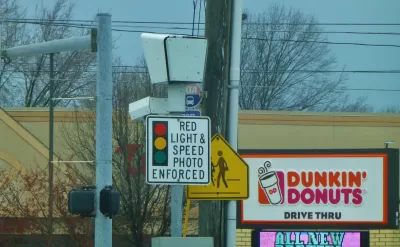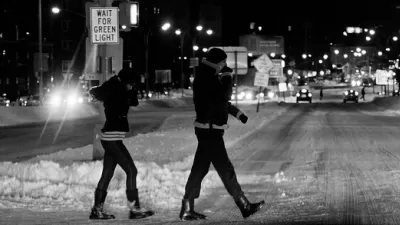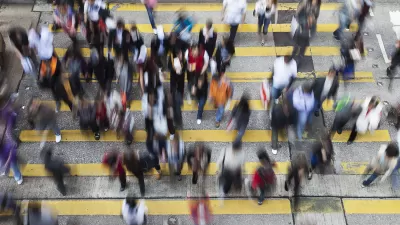Active Transportation Alliance, a Chicago pedestrian advocacy group, urges Mayor Rahm Emanuel to improve red light cameras rather than remove them. Despite complaints from drivers, well-advertised cameras can reduce pedestrian fatalities.

Chicago's mayor is under pressure to dial back on red light cameras. "During the last election, Emanuel and many City Council members came under fire from opponents who pledged to abolish the automated enforcement program. In early March, Emanuel announced he would remove 50 red light cameras at 25 intersections that saw one or fewer right-angle crashes in 2013."
The removals come alongside some improvements for pedestrians. "The mayor also promised to have pedestrian countdown signals installed at all of the city's 174 red-light camera intersections by June 1. He pledged that community meetings would be held before red light cameras are installed, moved, or removed."
Ron Burke of the Active Transportation Alliance said "it's important to remember why we have the cameras in the first place: Chicago traffic crashes kill an average of 145 people a year, and significantly injure 21,000 more. While the city has an epidemic of dangerous driving, there aren't enough police officers to enforce the laws [...]"
"Burke said Emanuel still needs to put together a comprehensive Vision Zero strategy, similar to what Mayor Bill DeBlasio has done in New York. This led to DeBlasio reducing that city's default speed limit to 25 mph."
FULL STORY: Active Trans: Improve, Don’t Remove Cams, Launch a Vision Zero Strategy

Planetizen Federal Action Tracker
A weekly monitor of how Trump’s orders and actions are impacting planners and planning in America.

Maui's Vacation Rental Debate Turns Ugly
Verbal attacks, misinformation campaigns and fistfights plague a high-stakes debate to convert thousands of vacation rentals into long-term housing.

Restaurant Patios Were a Pandemic Win — Why Were They so Hard to Keep?
Social distancing requirements and changes in travel patterns prompted cities to pilot new uses for street and sidewalk space. Then it got complicated.

In California Battle of Housing vs. Environment, Housing Just Won
A new state law significantly limits the power of CEQA, an environmental review law that served as a powerful tool for blocking new development.

Boulder Eliminates Parking Minimums Citywide
Officials estimate the cost of building a single underground parking space at up to $100,000.

Orange County, Florida Adopts Largest US “Sprawl Repair” Code
The ‘Orange Code’ seeks to rectify decades of sprawl-inducing, car-oriented development.
Urban Design for Planners 1: Software Tools
This six-course series explores essential urban design concepts using open source software and equips planners with the tools they need to participate fully in the urban design process.
Planning for Universal Design
Learn the tools for implementing Universal Design in planning regulations.
Heyer Gruel & Associates PA
JM Goldson LLC
Custer County Colorado
City of Camden Redevelopment Agency
City of Astoria
Transportation Research & Education Center (TREC) at Portland State University
Jefferson Parish Government
Camden Redevelopment Agency
City of Claremont





























